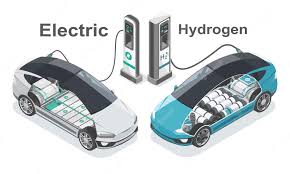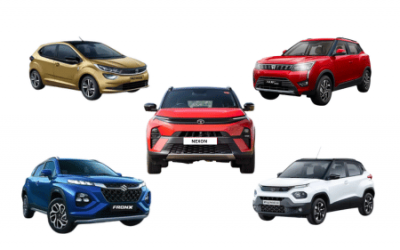Hydrogen-powered cars, once viewed as the future of sustainable transportation, have been under the spotlight in 2023. As the global push for decarbonization intensifies, hydrogen fuel cell vehicles (FCEVs) are emerging as a key contender in the race to replace fossil-fuel-powered cars. However, their journey has been filled with both milestones and hurdles.
This year offered critical lessons about the viability of hydrogen as an automotive fuel, shaping perspectives on its future in the transportation ecosystem. Let’s explore what 2023 revealed about the promise and challenges of hydrogen-powered cars.
1. Hydrogen as a Clean Fuel: The Science Holds Up
Hydrogen remains a compelling option due to its environmental benefits:
- Zero Emissions: Hydrogen-powered vehicles emit only water vapor, making them ideal for reducing air pollution.
- High Energy Efficiency: Hydrogen fuel cells convert chemical energy into electricity with impressive efficiency, especially in long-haul and high-demand applications.
- Versatility: Hydrogen can be produced using renewable energy, enabling a circular economy when integrated with green production methods.
2. Adoption Trends: Slow but Steady Growth
While FCEVs haven’t reached mainstream adoption like battery electric vehicles (BEVs), their presence is growing in niche markets:
- Heavy-Duty Vehicles: Hydrogen-powered trucks and buses gained traction in 2023 due to their extended range and faster refueling times compared to EVs.
- Regional Focus: Countries like Japan, South Korea, and Germany continued to invest heavily in hydrogen infrastructure and incentives.
- Fleet Applications: Logistics companies are exploring FCEVs for fleet operations, where centralized refueling can overcome infrastructure gaps.
3. Infrastructure Challenges Persist
The biggest obstacle to the widespread adoption of hydrogen-powered cars in 2023 was the lack of refueling infrastructure:
- Limited Stations: Hydrogen refueling stations remain sparse, with most concentrated in urban areas or specific regions like California and parts of Europe.
- High Costs: Building hydrogen infrastructure is expensive, requiring significant investment in production, storage, and distribution systems.
- Supply Chain Bottlenecks: Green hydrogen production (using renewable energy) is still in its early stages, limiting availability and raising costs.
4. Green Hydrogen vs. Grey Hydrogen: The Sustainability Question
Hydrogen’s environmental credentials depend on how it is produced:
- Green Hydrogen: Made using renewable energy to split water into hydrogen and oxygen, it is truly sustainable but currently expensive to produce.
- Grey Hydrogen: Derived from natural gas, it is cheaper but produces significant CO2 emissions, undermining its green potential.
- Blue Hydrogen: Captures emissions from grey hydrogen production, but adoption is limited due to additional costs and infrastructure needs.
2023 highlighted the urgent need to scale up green hydrogen production to ensure the long-term viability of hydrogen-powered cars.
5. Cost Barriers: Production, Vehicles, and Fuel
Cost remains a critical factor affecting the adoption of hydrogen cars:
- Vehicle Prices: Hydrogen cars, like the Toyota Mirai and Hyundai Nexo, are still expensive compared to traditional EVs due to complex fuel cell technology.
- Fuel Costs: Hydrogen fuel is pricier than electricity or gasoline, particularly in regions with underdeveloped production facilities.
- Production Costs: The transition to green hydrogen will require significant investment to bring costs down to competitive levels.
6. Competitive Landscape: Hydrogen vs. BEVs
2023 reinforced the reality that hydrogen-powered cars face stiff competition from BEVs:
- Charging Infrastructure: EV charging networks are expanding rapidly, outpacing hydrogen refueling stations.
- Technology Advancements: Improvements in EV battery range and charging speed make them more appealing for everyday consumers.
- Market Momentum: Automakers and governments have prioritized BEVs over FCEVs in their electrification strategies, creating a challenging market dynamic for hydrogen.
7. Policy and Industry Support: A Mixed Bag
Government policies and industry commitments in 2023 had a mixed impact on hydrogen-powered cars:
- Positive Developments:
- Europe’s “Hydrogen Strategy” aims to create a robust hydrogen economy, with substantial funding for infrastructure and R&D.
- South Korea and Japan maintained strong support for hydrogen vehicles, emphasizing domestic adoption and export potential.
- Challenges:
- In the U.S., federal incentives favored EVs, leaving hydrogen somewhat sidelined.
- Limited alignment between global policies has slowed progress in creating a cohesive hydrogen ecosystem.
8. Lessons from Commercial and Fleet Use
Commercial applications have been a proving ground for hydrogen-powered vehicles:
- Success Stories: Hydrogen-powered trucks, like the Hyundai XCIENT and Nikola Tre, demonstrated reliability and efficiency in long-haul applications.
- Scaling Challenges: Fleet operators highlighted the need for more accessible and cost-effective refueling infrastructure.
These lessons underscored the potential of hydrogen for specific use cases, even as consumer adoption lags.
The Road Ahead for Hydrogen-Powered Cars
The future of hydrogen-powered cars depends on overcoming the challenges revealed in 2023:
- Scaling Green Hydrogen Production: Increasing green hydrogen capacity is essential to make FCEVs truly sustainable.
- Building Infrastructure: Expanding refueling networks is a prerequisite for broader adoption.
- Reducing Costs: Technological advancements and economies of scale will be key to making hydrogen vehicles competitive with BEVs.
- Policy Alignment: Coordinated global efforts are needed to create a supportive ecosystem for hydrogen transportation.
- Targeted Applications: Focusing on heavy-duty and long-range applications can establish a strong foothold for hydrogen in transportation.
Conclusion
2023 was a year of both progress and challenges for hydrogen-powered cars. While the technology holds immense promise for reducing emissions and complementing battery-electric solutions, its widespread adoption will require significant advances in infrastructure, cost reduction, and green hydrogen production.
As the auto industry continues to evolve, hydrogen-powered vehicles are likely to play a crucial role in decarbonizing transportation, particularly in niche markets and specific applications. With sustained investment and innovation, the vision of a hydrogen-powered future remains an exciting possibility for the years ahead.
0




